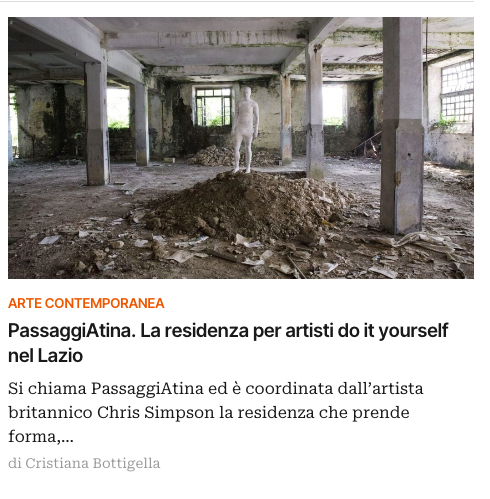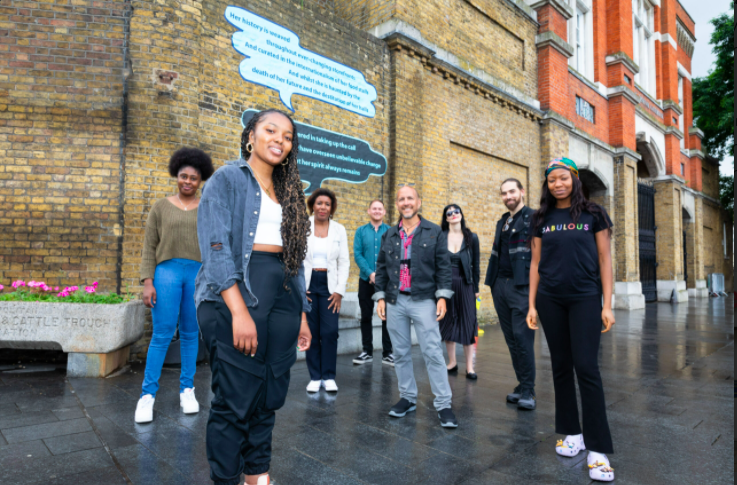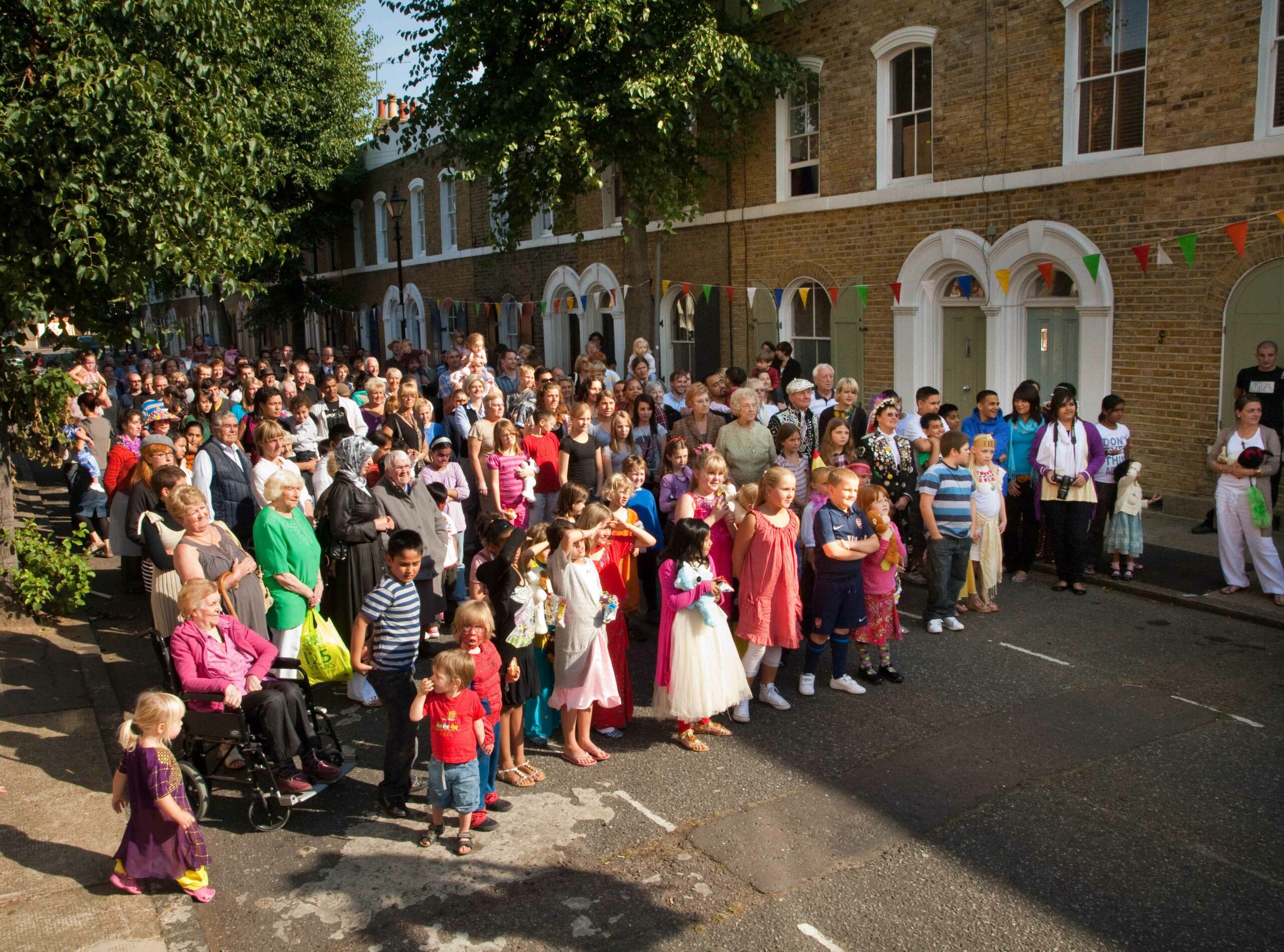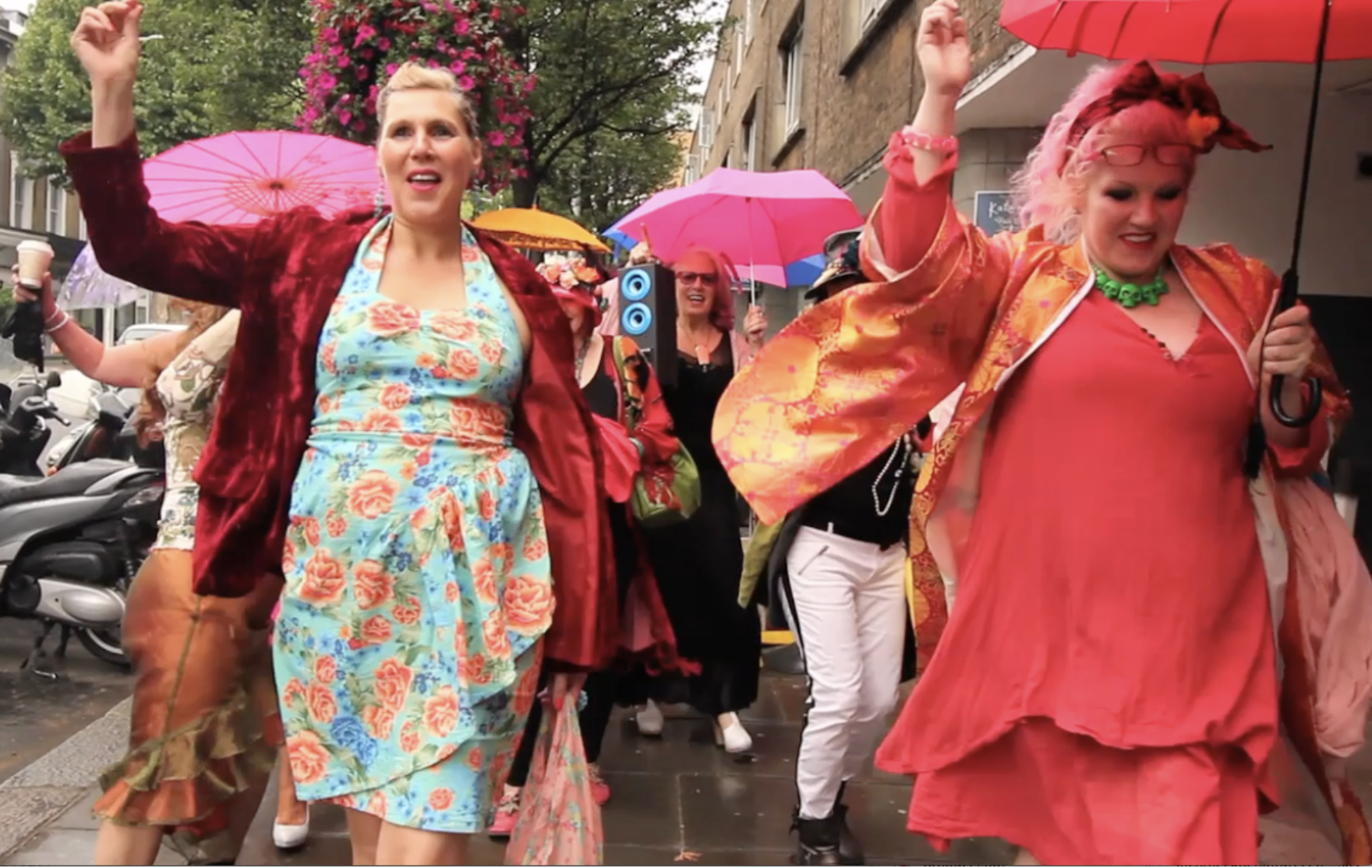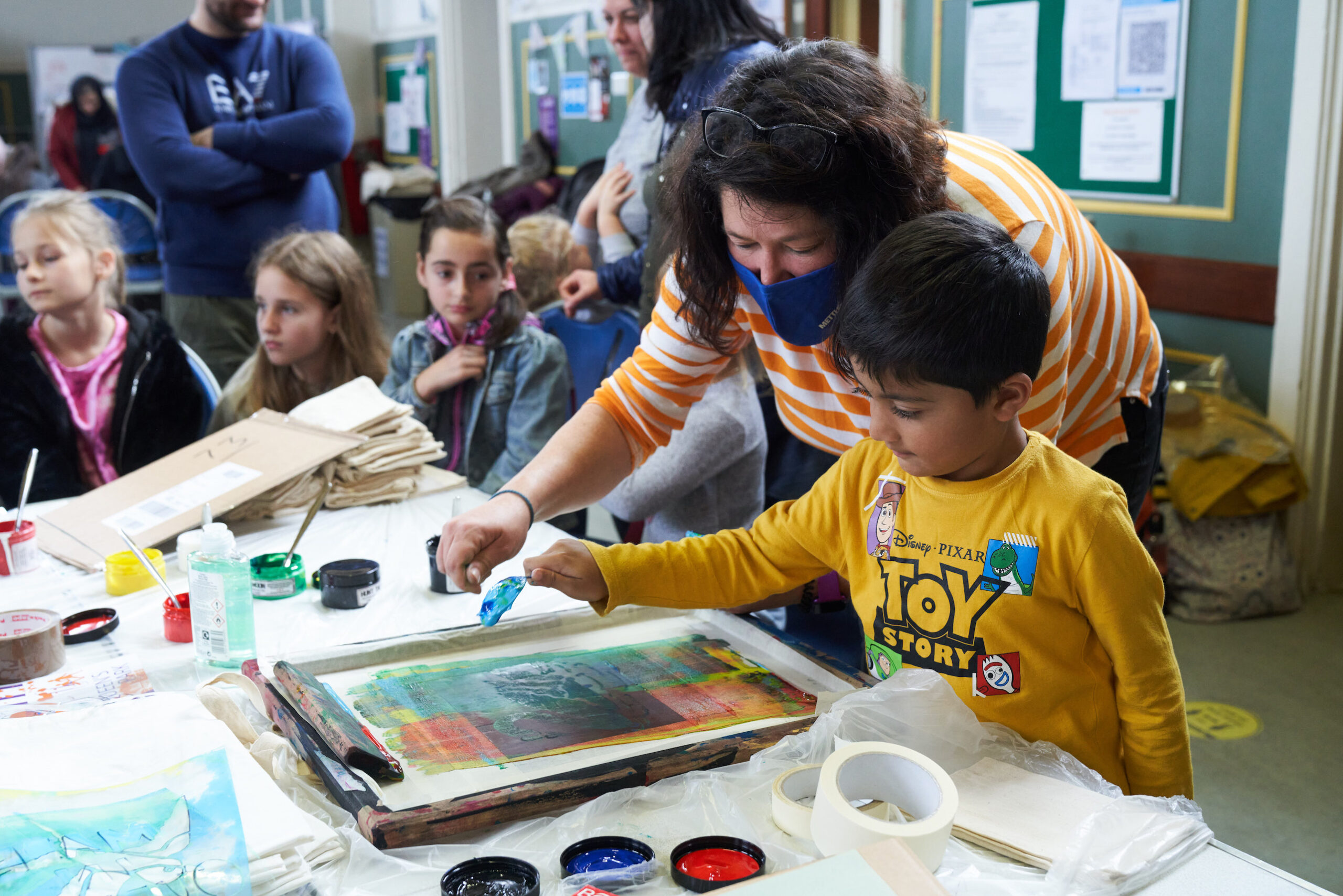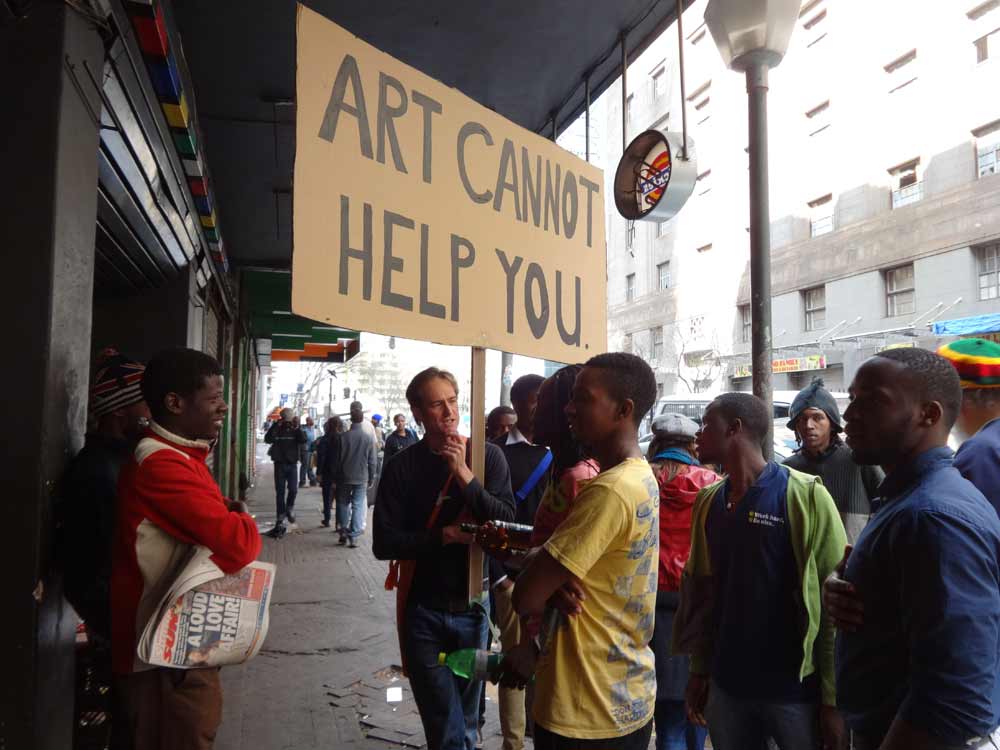http://www.melaniemanchot.net/
How does social engagement fit into in your practice and what event or single opportunity informed that change?
My work has always formed a sustained enquiry into questions on the human condition and pursued a socially engaged approach. I think this comes from my strong belief that visual art, or other art forms as well have in a way a social contract with our society: we reflect the world, we reflect societies, we raise questions and pass comment on it. Artists can provide reflections, observation and critique that is very different from other forms of critique and engagement such as journalism, politics or social work. There isn’t necessarily one milestone or event that changed my practice as such. I’ve always had this overriding sense that the work needs to reflect upon its time and place. This has led increasingly to particular kinds of foundations or pillars in the work, which remain present throughout, such as a strong connection to location and to ideas of participation, collaboration and co-authorship.
Your older projects had a very strong element of participation, and how has that changed in your practice?
Well, I’d say it has and it hasn’t. The first work that was a longer extensive project was a body of work where I photographed my mother for five years. I photographed her naked, and in a way that was probably the most intense collaborative process of engagement because I asked this particular woman, whom I was intensely close to, for permission to look at her over and over again. I didn’t plan to have this huge project with her. I set out to make a couple of photographs and then it turned into something much bigger because of the integral development of what happened in the work. If there is a milestone of change, that was probably in around 2000 when the work with my mother came to an end and I started engaging with strangers, passers-by and inviting them to engage with short term momentary participations in the work. But still, these participants very much defined a lot of the parameters in the work. The first work that came after working with my mother for so long is a video called For A Moment Between Strangers, where I stop people in the street, randomly and ask them whether they will give me a kiss. And to me that work is absolutely about a moment of exchange and connection where the parameters are quite often defined by the other person, so it’s up to them what they do with this invitation. In a sense, forms of participation have always been there but they take different shapes and forms.
At the moment I am in the process of making a feature film that focuses on one particular person whom I met nine years ago in the context of making a body of work entitled Twelve that addresses addiction and recovery.
Did you work on this project during COVID?
I’ve been developing this film for about 5 years now and with uncanny timing we went into pre-production, getting ready to film in 2020. Which of course then became hugely complicated, particularly as the film involves a relatively larger cast and crew then I normally work with. This film is the most ambitious project I have ever worked on and to try and film it during a pandemic has been challenging to say the least. The work is both a feature film and a multi-channel installation for gallery and museum presentation. To make a feature film is tough if you’re a filmmaker but even more difficult if you’re an artist and have never worked in the film industry. To then attempt to do this during COVID was quite mad.
I’m working with very vulnerable people. We started working in December 2019 and we were supposed to go into production in March 2020. I was with all these people on the on the 16th of March 2020 and I was due to go back and film again on the 23rd of March which is when we went into the first lockdown. Throughout 2020, we managed to film very sporadically, just to keep everybody engaged. But we postponed five times. Going into production requires an enormous dose of adrenaline, not just in me but a collective sense of heightened energy, so that as a team you enter that space of total concentration on the object you wish to jointly make. That collective energy is amazing when you are in it, however what happened with this production is that we built up to it several times and then I had to take the difficult decisions to postpone over and over to keep everyone safe and healthy. But it means that everyone then needs to drop that energy and that is really hard. For a year I was always the messenger bringing bad news.
Let’s talk about Twelve in particular, can you tell me how the idea came about and how you produced it?
Across my practice I work on commissions and self-funded projects. Sometimes I apply for funding, or I have an idea and then an opportunity comes along that fits that particular idea. Twelve is an interesting case. I was approached by a curator who sent me a very short email asking if I would be interested in discussing a project about addiction. I thought this could be either really problematic or really interesting. Problematic because addiction is such a difficult subject to make work with, partly because it’s full of stereotypes and full of both vilification and glorification. But also, even though I have experience of addiction in others, I haven’t suffered with addiction myself yet. So, there’s also the question of what right do I have to speak. To me, a huge subject that is really important at the moment is the whole question of which authority we have to speak. In the past there were probably a whole range of positions for artists. There is the insider position. When I was working with my mother, the work was very much inflected by feminist concerns. At the time I felt that the only person I could make this body of work with was my mother as she was the only older person I could possibly speak with, to speak as two women together. And that’s one position yet there is also the position of ‘the other’, where we position ourselves as an outsider and look in onto something, hopefully with some clarity on it and in the past that has always been a valid position to take. But this position at the moment is very complicated. To take the position of the outsider to speak with or about a community is considered to be much more controversial. I think the crucial question here is to find a way to ‘speak with’ and not ‘about’.
I still feel that there is value in the position of an outsider looking in, but particularly at the moment there are many communities where I feel I wouldn’t have permission to speak, where you can only speak from the inside. These are complicated questions which came up with the issue of addiction: how can I talk about it. The curator Mark Prest, who invited me, spoke from a position of personal knowledge on the subject and he was convinced that I’d be the right person to engage in the project. He runs an organisation called Portraits of Recovery, which deals with projects that engage with recovery, as an artistic practice. We jointly applied for money from the Wellcome Trust and Arts Council England. It probably took about three years to get all the funding. I started working on it first through a research grant and then we moved into production thanks to Arts Council funding.
What are the challenges for someone doing this kind of work?
I think there’s a number of challenges. One must definitely be this question of who we speak with, how do we speak with them? But also, how can we set up projects that are a right balance between being powerful as artworks, and powerful as social engagement? I think that is to me probably one of the biggest challenges, but also one of the most interesting ones. A lot of people who work within social engagement would probably disagree with me and say that they would put the engagement at the forefront of the project and aesthetics is less relevant. I will always insist that I am operating on the grounds of art, and it is my responsibility as an artist to produce work that functions on the grounds of aesthetics. I also think it’s my responsibility towards the participants that I produce something that has validity within the discourse of visual art.
I make choices to protect both the integrity of the participants and the integrity of the work.
Another challenge concerns the question how you can respond to a commissioning context in such a way that the work can exist beyond that brief.
Sometimes you make work that is so specific to a particular context that it can never transcend it. And that is very problematic because it’s not a good use of either time or resources.
Do you think you could have done it differently, in a way that it could have relevance somewhere else?
Yeah, or maybe come up with a completely different idea that is engaging with the context. A lot of the work that I’ve been commissioned to make is engaging with context. For example, Celebration (Cyprus Street), is specific as it was made on one particular street in the East End but it deals with the idea of streets and demographics and the work has been shown loads of times because it transcends its context and it speaks to a wider audience. But sometimes it’s hard to know that in advance, you make something and you’re convinced that it’s a really powerful work and then you suddenly only afterwards see that it can’t quite transcend its context. That’s definitely a lesson, when the context is hyper specific it can be hard to make work that then has relevance outside of the context.
Can you tell me about The Ladies project?
Recently I’ve started to rethink my relationship with photographs as material, rather than objects. I think it’s much more liberating to think that the material as an image can be presented in a number of different ways, which is something that someone like Wolfgang Tillmans has done for decades. The series The Ladies was commissioned by Kettle’s Yard for their re-opening exhibition. Andrew Nairne asked me whether I would be interested in working on a project in Cambridge with their nearest neighbours, which is a Bangladeshi community in North Cambridge. So, again those classic two challenges and questions. Do I have agency and permission to make work with a Bangladeshi community? Do I have permission or authority to speak with them, and how can I make something that isn’t then just confined to this particular place? In this case, it came together in a very light and fluid way and it surpassed my own expectations. I decided that I wanted to work with Bangladeshi women, and I found this group that called themselves ‘The Ladies’. I proposed a number of ideas to do with the history of performance art and Valie Export in particular and make a small series of works that engages with the ‘Body Configurations’ that she did in the 70s: they were really up for it. We staged and restaged, they staged themselves and we made these images sort of really in a kind of exchange, and in this case the images do travel, they go beyond Cambridge.
Do you think there are producers or commissioners who are particularly interested in supporting socially engaged practice?
We should firstly mention Claire Bishop and her book Artificial Hells, which I think is important in this context. The organisation If I can’t dance I don’t want to be part of your revolution is inspiring: https://ificantdance.org
An organisation like Portraits of Recovery really is important in its field. But there are many others, both individual and institutionally: For example, there is a really wonderful curator called Persilia Caton. She worked at Space Gallery for a while, where she commissioned Lindsey Mendick recently when Space reopened. Persilia is completely committed to socially engaged practice and commissioning artists. Another one is David Wright, who runs an organisation called Commisson Projects. And Tamsin Dillon who produced the incredible 14-18NOW project and has recently founded her own orangisation Art in Public. A lot of work commissioned for Whitstable Biennial, by the director Sue Jones is really interested in developing ideas on location-based projects that relate to communities and the specificity of context.
I think there are a lot of really good commissioners out there.
Do you have a network of support or are you part of peer support group?
There’s a group of women photographers who I’ve known probably for about 20 years. We were at the Royal College of Art together and we normally meet once a month and discuss each other’s work. For the past two years I have been part of a writers’ group where we look at each other’s writing. And even though I don’t write that much, the current film I’m making does have a script. I’m also part of a reading group, which is about reading particular essays and works around each other’s practice. All these groups really help a lot.
How has your relationship with technology changed during the last 12 months?
Like everybody else, I’ve engaged more with screens. I watch films obsessively, and it’s probably one of the things that informs me most. I have endless notebooks full of notes on films, and obviously all of that has been not in community shared spaces like a cinema but on the computer. I haven’t really engaged much with online art, probably to my detriment, I just find it really difficult. I think the last year has made me realise how important it is to see art as an embodied multi-sensory being, ideally in a room with other multi-sensory bodies. So, whether it’s utterly conventional and conservative, to me art is very much an embodied physical critical space. In a reverse movement to the general migration towards technology, I’m making a series of photographs at the moment which are a very idiosyncratic and indirect response to COVID. These images are made with a large format 5×4 plate cameras with negatives and Polaroids and so that’s really old technology. But I think it can be equally relevant to go back to some older technologies that are less present, perhaps for me it is not just a one-way movement into everything becoming more digital and high-tech. Low tech can be incredibly rewarding.
Is there anything you wish you knew when you started your career?
To trust my intuitions. As artists, we need to understand where we can make a difference, and what we can do. If we can make a tiny bit of difference to somebody, if something that I’ve been able to produce makes people think, or makes them feel or makes them listen, or makes them embrace the world. To find that space and voice as a young artist, it takes some time and it does require some trust in your intuitions.
